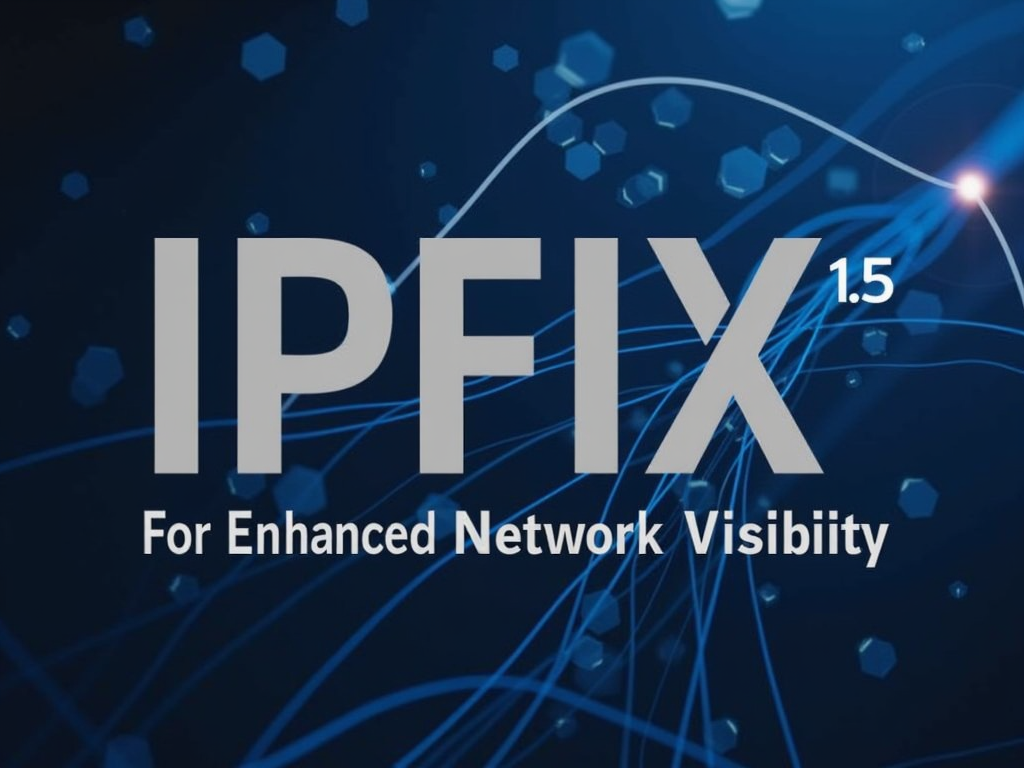How to Use IPFIX for Enhanced Network Visibility
IPFIX (Internet Protocol Flow Information Export) is a protocol that enables network devices and applications to export traffic flow information, providing valuable insights into network behavior and performance. In this article, we’ll explore how to use IPFIX for enhanced network visibility.
What is IPFIX?
IPFIX is a standardized protocol that allows network devices, such as routers, switches, and firewalls, to collect and export traffic flow information. This information includes details about the packets flowing through the device, including source and destination IP addresses, ports, protocols, and packet sizes.
Why Use IPFIX for Network Visibility?
IPFIX provides several benefits that enhance network visibility:
- Packet-level visibility: IPFIX exports detailed information about every packet that traverses a device, allowing you to understand exactly what’s happening on your network.
- Flow-based analysis: By grouping packets into flows based on common characteristics (e.g., source and destination IP addresses), you can analyze traffic patterns and identify trends.
- Compliance with regulatory requirements: IPFIX helps organizations meet compliance requirements by providing detailed information about network activity.
How to Use IPFIX for Enhanced Network Visibility
To use IPFIX for enhanced network visibility, follow these steps:
Step 1: Configure Your Devices
Configure your network devices (e.g., routers and switches) to export IPFIX data. This typically involves setting the collecting-process option in the device’s configuration file.
For example, on a Cisco router:
cisco
ip flow-export version 10
Step 2: Set Up an IPFIX Collector
Set up an IPFIX collector (a software component that receives and processes IPFIX data) to collect and analyze the exported data. Popular IPFIX collectors include:
- NetFlow: A collector developed by Cisco Systems, Inc.
- sFlow: An open-source collector developed by sFlow Technologies, Inc.
- Fluendo: An open-source collector developed by Fluendo, Inc.
Step 3: Configure Your Collector
Configure your IPFIX collector to collect and analyze the exported data. This typically involves setting up filters to specify what types of traffic you want to capture (e.g., specific protocols or source/destination addresses).
For example, using NetFlow:
netflow
set export-version 10
set export-format netflow-v9
set source-interface eth0
Step 4: Analyze Your Data
Analyze the collected IPFIX data using a tool like Excel, Python, or R. You can create custom reports and visualizations to gain insights into your network’s behavior.
For example, you might use Python and the pandas library to analyze NetFlow data:
“`python
import pandas as pd
Load NetFlow data from a file
df = pd.read_csv(‘netflow_data.csv’)
Group data by source IP address
source_ips = df.groupby(‘src_ip’)
Calculate average packet size per source IP
avg_packet_sizes = source_ips[‘packet_size’].mean()
print(avg_packet_sizes)
“`
Step 5: Visualize Your Results
Visualize your analysis results to gain a deeper understanding of your network’s behavior. You can use tools like:
- Graphite: A popular graphing and analytics platform.
- Grafana: An open-source visualization tool.
- Matplotlib: A Python library for creating visualizations.
For example, you might create a bar chart showing average packet size per source IP:
“`matplotlib
import matplotlib.pyplot as plt
Load analyzed data
data = avg_packet_sizes.to_dict()
Create a bar chart
plt.bar(data.keys(), data.values())
plt.xlabel(‘Source IP’)
plt.ylabel(‘Average Packet Size’)
plt.title(‘Average Packet Size per Source IP’)
plt.show()
“`
By following these steps, you can leverage IPFIX for enhanced network visibility and gain valuable insights into your network’s behavior.
Conclusion
IPFIX is a powerful protocol that enables network devices to export traffic flow information, providing detailed insights into network behavior and performance. By configuring your devices, setting up an IPFIX collector, and analyzing the collected data, you can gain a deeper understanding of your network and improve its overall visibility and management.



